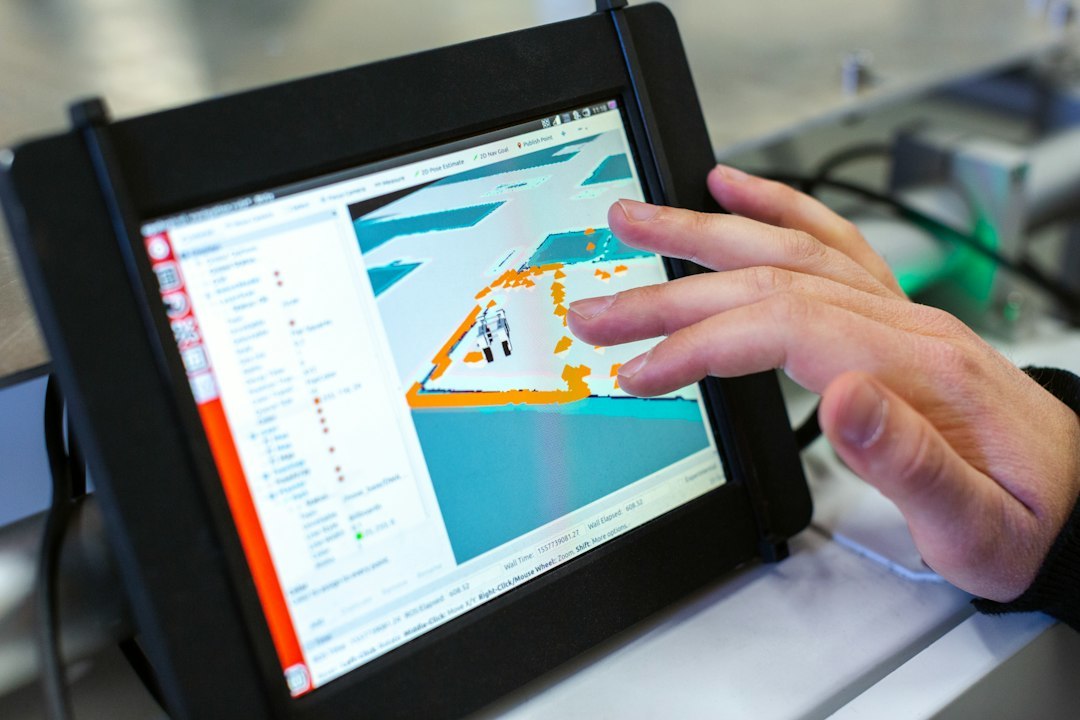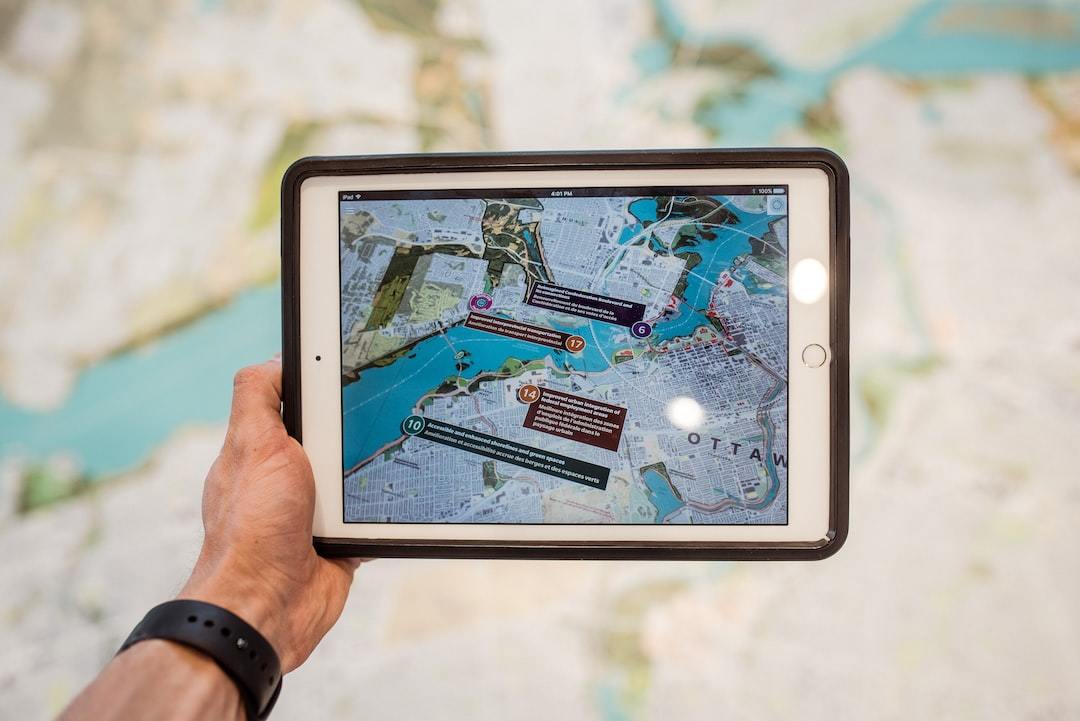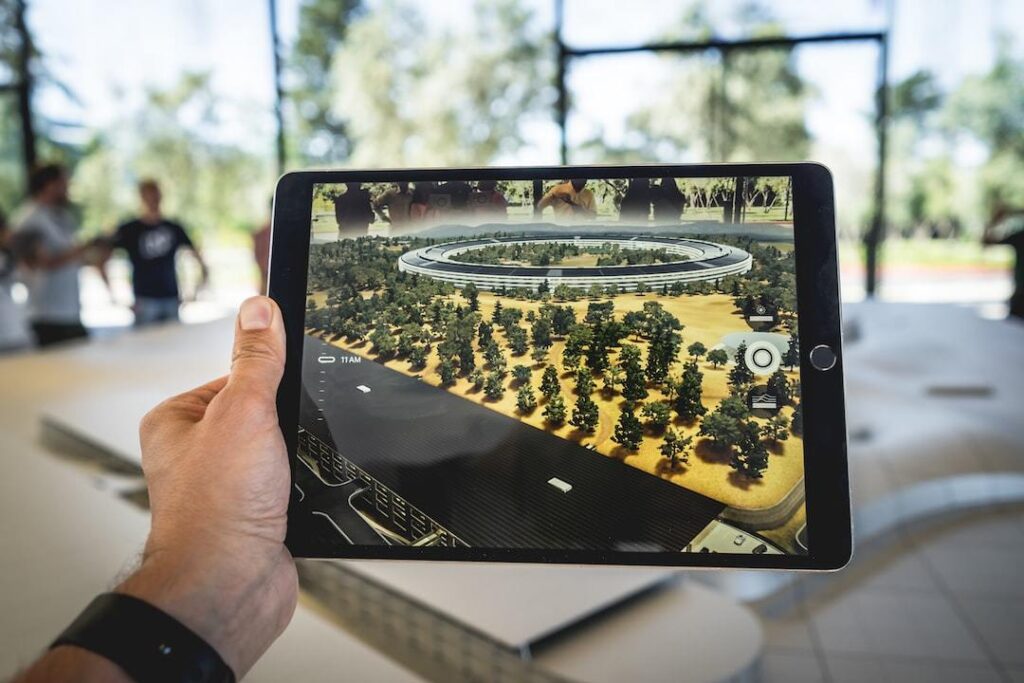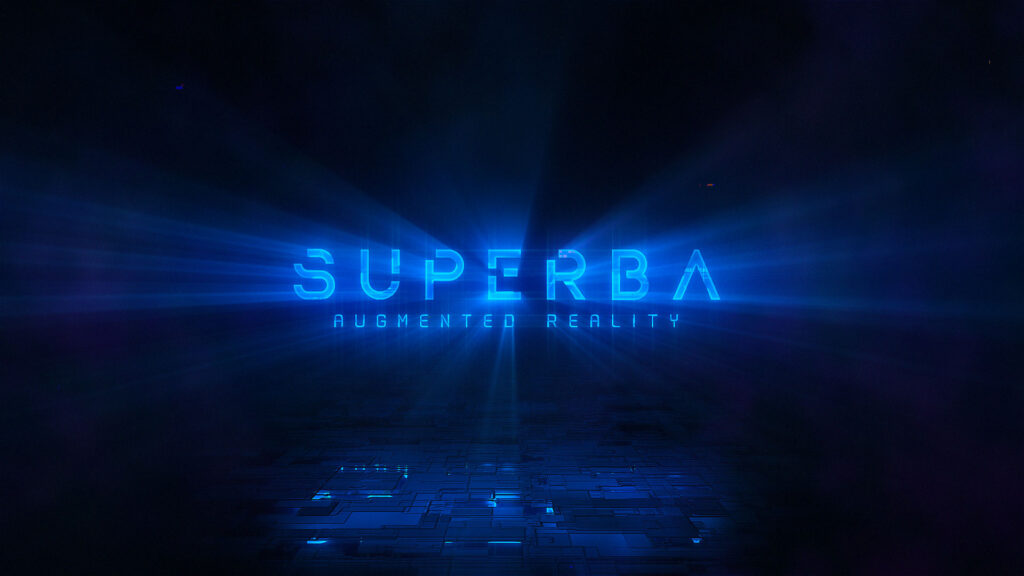How Augmented Reality and AI Intersect
By combining AR and AI, a user is presented with an experience that’s both engaging and responsive. But how exactly is AI integrating into augmented reality working for businesses?
The link between AR and AI isn’t as elusive as it may appear. You can think of AR as the lens through which we interact with digital elements in our physical world, while AI serves to enhance this interaction by making it more intelligent, context-aware, and personalized.

AR Glasses
This symbiotic relationship allows for some fascinating possibilities. For example, consider AI-powered glasses. These devices use AI applications to analyze what the wearer sees in real-time. This information then influences the augmented reality overlay that is projected onto their field of vision.
In essence, AI gives ‘eyes’ to AR – enabling a level of contextual understanding that wasn’t previously possible. The output from one feeds into another – creating a seamless loop where each technology enhances the capabilities of its partner.
Finding Patterns Through Machine Learning
Machine learning, a subset of artificial intelligence, plays a key role here too. It’s a deep learning system that enables data collection from patterns or experiences without being explicitly programmed – improving over time with increased exposure.
- Think about those cool social media filters you love using? That’s machine learning at work.
- An e-commerce app uses AR + machine learning, allowing customers to try on clothes virtually before buying them online.
- AI-powered translation apps use AR to overlay translated text onto foreign language signs in real-time.
These examples demonstrate how AI algorithms and augmented reality experiences are deeply interconnected. Together, they form a relationship that’s enhancing our digital interactions with the physical environment in real time.
User Experience Changes With AI
Incorporating AI into AR also makes interactions feel more natural. Fore example, remember when Siri first came out? Conversations were a bit robotic. But thanks to advances in machine learning, virtual assistants have become much smoother talkers. Hence nowadays, AI chatbots have capabilities beyond the early day assistants.
This improvement has made its way into augmented reality too – we see voice commands and voice recognition being used increasingly often as a control mechanism in these immersive environments.
Real-World Applications of AR and AI
AR and AI are revolutionizing the environment around us. From education to healthcare, retail, and beyond – these technologies have shown they’re not just for gaming anymore.

AI In Content Creation
AI-Generated content has become something robust in recent years, similar to the development of Siri as we talked about prior. Traditional content creation methods included researching a topic, then writing the piece of content in only one of a few selective styles, persuasive, informative, etc.
Then came AI, AI-generated content consisted of doing preliminary research on a selected topic before writing. Then AI-generated content transitioned into giving talented writers a basis on what to write on, speeding them up on what to write, but them adding their genuine writing talent to the paper.
We’re still in the early stages, but these AI algorithms have come to the point where AI-generated content will replace traditional content creation methods as a whole.
Educational Uses of AR & AI
The use of AR in classrooms has been a game-changer. With interactive lessons that stimulate curiosity, students grasp complex topics with ease.
An excellent example is how biology classes can visualize human anatomy using 3D models rather than flat diagrams from textbooks.
Healthcare Innovations through AR & AI
In healthcare too, this powerful combo plays a vital role. Surgeons now use AR technology during operations, overlaying digital images onto real-world objects for precision work.
Moreover, diagnostic processes are improved with artificial intelligence helping to analyze patient data more accurately.
Entertainment Industry Reimagined by AR
The entertainment industry has been improved through the use of Augmented reality. One example of AR marketing is for the release of the new film Wish.
Superba recently introduced an interactive AR adventure that aligns with the premiere of Disney’s latest film, ‘Wish.’ In partnership with Verizon, we present Wish On a Star, a web-based AR experience aimed at spreading holiday joy to underprivileged children in your community. Join us in making wishes come true this season!
How AR Enhances AI Capabilities
Firstly, let’s consider how AR can supercharge object recognition, a key aspect of AI. By providing real-world visuals for processing, AR allows AI algorithms to better understand context and improve decision-making abilities. This makes interactions more natural and immersive.
A practical example is Superba’s work on Apple Vision Pro Glasses. We’re endeavoring to extend the limits by incorporating propelled AI strategies into our increased reality applications.
AR and Economic Growth
Economically speaking, these technologies generate new opportunities for growth and employment across various sectors. According to a report from PwC UK, by 2030 AI could contribute up to $15 trillion worldwide, a significant portion of which will be driven by applications integrated with augmented reality techs like Superba’s solutions.
New jobs are being created in AR-AI development, and existing roles are evolving to accommodate these technologies. This progress requires a workforce with new skills, leading to more opportunities for training and education.
Ethical Considerations
But while we marvel at the advancements brought about by AR and AI, it’s important not to overlook ethical considerations. Issues such as data privacy and security need thorough discussion because misuse of personal information can have serious consequences.
It is imperative that we gain a clear comprehension of the operations of these innovations.
Working With Superba
We specialize in AR using world, face, object and body tracking to deliver complete applications that connect the virtual world with the real world as well as virtual reality.
Our team members have over 20 years of experience working in Hollywood on blockbuster movies such as Man of Steel, Iron Man and Avengers and experience working with Snapchat on Augmented Reality Facial Filters. Schedule a call with us here to do something similar for your businesss.
FAQs in Relation to Augmented Reality and Ai
How is AI used in augmented reality?
AI fuels AR by interpreting real-world data, understanding user behavior, and making predictive actions. This helps to create more realistic and interactive experiences.
What is the difference between augmented reality and AI?
Augmented Reality (AR) enhances our physical world with digital elements while Artificial Intelligence (AI) makes machines think like humans. They work together but have distinct roles.
What is the difference between generative AI and augmented reality?
A generative AI creates new content or predictions from learned patterns. Augmented Reality adds virtual elements into our actual environment for an enhanced experience.
What is the difference between AR and VR in AI?
In artificial intelligence applications, AR overlays digital info onto the real world whereas VR fully immerses users into a completely simulated environment.




